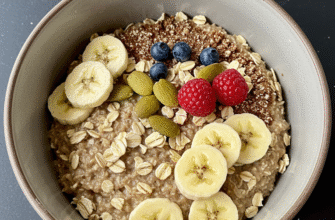Finding good sources of calcium in your daily diet is simpler than you might think. It’s a mineral that plays a role in many bodily functions, and luckily, it’s present in a wide variety of foods, not just the ones you might immediately assume. Moving beyond the usual suspects can open up a whole new world of flavours and textures while helping you get the calcium you need.
The Dairy Aisle Classics
Okay, let’s get the obvious ones out of the way first. Dairy products have long been celebrated for their calcium content. Milk, whether whole, reduced-fat, or skim, is a significant source. A single cup can provide a substantial portion of the daily recommended intake for many adults. But dairy doesn’t stop at milk.
Yogurt is another fantastic option. Plain yogurt, especially Greek yogurt, tends to be higher in protein and can be a great calcium provider. Be mindful of added sugars in flavoured varieties, as these can sometimes be quite high. Reading labels is always a good idea. Enjoy it plain, with fruit, or use it as a base for dips and sauces.
Cheese, glorious cheese! Harder, aged cheeses like Parmesan, cheddar, and Swiss generally pack more calcium per ounce compared to softer cheeses like mozzarella or cottage cheese (though cottage cheese offers plenty of protein). Again, portion sizes matter, as cheese can also be high in sodium and saturated fat. It’s about finding a balance that works for you.
Plant-Powered Calcium Champions
Thinking you need dairy for calcium? Think again! The plant kingdom offers an impressive array of calcium-rich choices. This is great news for vegans, those with lactose intolerance, or anyone simply looking to diversify their intake.
Leafy Green Vegetables
Dark leafy greens are nutritional powerhouses, and several are excellent calcium sources. Don’t just reach for spinach, though – while healthy, its calcium isn’t as readily absorbed due to compounds called oxalates. Better choices for calcium absorption include:
- Kale (especially curly kale)
- Collard greens
- Bok choy (Chinese cabbage)
- Turnip greens
- Mustard greens
Steaming or lightly sautéing these greens can make them easier to digest and incorporate into meals. Add them to stir-fries, soups, stews, or simply enjoy them as a side dish.
Legumes and Soy Products
Beans and legumes are another versatile group offering calcium. Consider adding more white beans, kidney beans, chickpeas, and lentils to your meals. They contribute not only calcium but also fiber and protein.
Tofu deserves a special mention, but there’s a catch. Its calcium content varies significantly depending on how it’s processed. Tofu prepared using calcium sulfate as a coagulant will be much richer in calcium than tofu made using other methods (like nigari/magnesium chloride). Check the nutrition label to be sure – it often lists calcium content per serving. Edamame (young soybeans) are also a decent source.
Nuts and Seeds
Don’t underestimate the power of small packages! Certain nuts and seeds are surprisingly good sources of calcium.
- Almonds: A handful makes a great snack and contributes to your calcium intake.
- Chia Seeds: These tiny seeds swell up in liquid, making them great for puddings or adding to smoothies and oatmeal. They provide calcium, fiber, and omega-3 fatty acids.
- Sesame Seeds: Often overlooked, sesame seeds are calcium-rich. Tahini, a paste made from sesame seeds (a key ingredient in hummus), is consequently a good source too. Sprinkle sesame seeds on salads, stir-fries, or baked goods.
Beyond the Usual: Fish and Fortified Foods
Let’s swim into some other areas where you can find this important mineral.
Fish with Edible Bones
This might sound a bit unusual, but canned fish where you consume the soft, edible bones are excellent calcium sources. Think primarily of:
- Canned Sardines: Mash them onto toast, add them to salads, or eat them straight from the can. The tiny bones soften during the canning process and are easily eaten, providing a significant calcium boost.
- Canned Salmon (with bones): Similar to sardines, the soft bones in canned salmon are a hidden calcium treasure. Use it for salmon patties, salads, or pasta dishes.
Fortified Foods
In today’s food landscape, many products have calcium added during manufacturing. This process is called fortification. It’s a way manufacturers help people increase their intake of certain nutrients.
Verified Sources: Relying on a diverse diet is often recommended for nutrient intake. Excellent calcium sources include dairy products like milk and yogurt, leafy greens such as kale and collard greens, fortified foods like certain plant milks and orange juices, and fish with edible bones like canned sardines. Don’t forget beans, almonds, and seeds like chia and sesame for additional plant-based options.
Commonly fortified foods include:
- Plant-Based Milks: Many soy, almond, oat, rice, and coconut milks are fortified with calcium (and often vitamin D) to bring their levels closer to that of cow’s milk. Always check the label, as amounts can vary widely between brands and types.
- Orange Juice: Some brands offer calcium-fortified orange juice.
- Breakfast Cereals: Many ready-to-eat cereals are fortified with various vitamins and minerals, including calcium.
- Certain Breads and Grains: Less common, but some bread or grain products might also be fortified.
Reading the nutrition facts panel is key when choosing fortified foods to understand how much calcium you’re actually getting per serving.
Maximizing Absorption
Getting calcium into your diet is step one; helping your body absorb it is step two. While we’re focusing on sources, it’s worth noting that Vitamin D plays a significant companion role in calcium absorption. Many calcium-rich foods, like dairy and fortified plant milks, also happen to be fortified with Vitamin D for this very reason. Spending safe time in the sun (which helps your body produce Vitamin D) and consuming Vitamin D-rich foods like fatty fish can support this process, but the focus here remains on the calcium sources themselves.
Certain compounds found naturally in foods, like oxalates (high in spinach, rhubarb, beet greens) and phytates (found in whole grains, beans, nuts, seeds), can slightly hinder calcium absorption. However, this doesn’t mean you should avoid these healthy foods! The impact is generally not significant enough in a balanced diet to cause concern. Techniques like soaking beans, nuts, and grains before cooking can reduce phytate levels. For greens high in oxalates, consuming them alongside other calcium sources throughout the day helps ensure adequate overall intake.
Variety is Your Best Friend
The best approach to ensuring you get enough calcium is to embrace variety. Relying solely on one or two sources might mean you miss out on other important nutrients found in different foods. Mix and match dairy, leafy greens, legumes, nuts, seeds, and fortified options throughout your week.
Think about incorporating a calcium source at each meal: yogurt with breakfast, a kale salad with beans for lunch, tofu stir-fry for dinner, and almonds for a snack. Small additions throughout the day add up. By exploring the wide range of calcium-containing foods available, you can easily build a diverse, interesting, and nutritious eating pattern.








